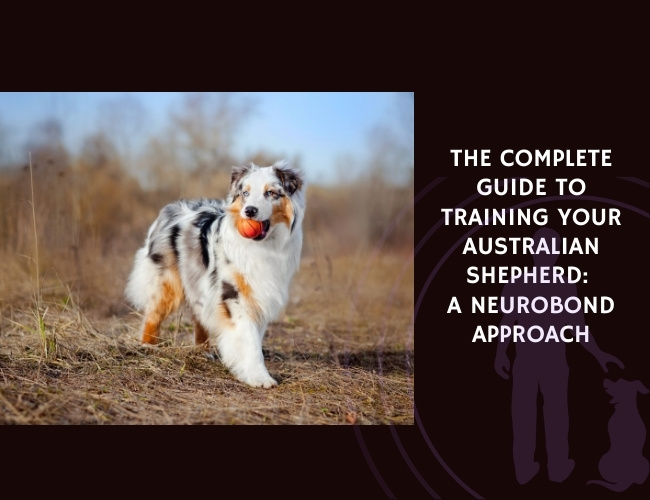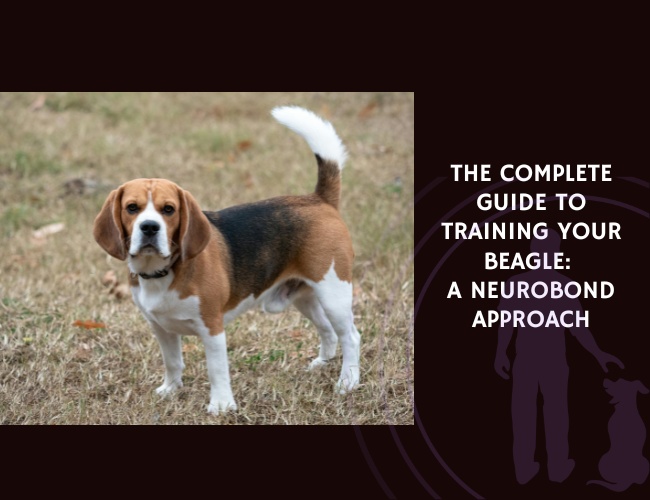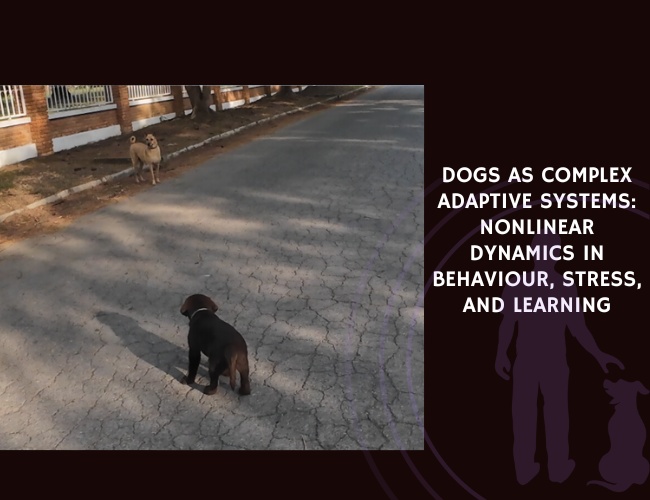Introduction
Have you ever wondered how your financial decisions directly impact your furry friend’s behavior and wellbeing? The relationship between economics and canine welfare runs deeper than most pet parents realize. From the moment you choose a specific breed to the daily decisions about training, nutrition, and healthcare, economic factors silently shape every aspect of your dog’s life—and ultimately, their behavior.
Throughout history, dogs have served humanity in various economic roles: hunters, herders, guards, and companions. Today, in our modern world, they’ve become family members whose care represents a significant financial commitment. Yet the economics of dog ownership extends far beyond simple costs and benefits. It encompasses market forces that drive breeding practices, insurance systems that influence healthcare decisions, and societal structures that determine which dogs thrive and which end up in shelters.
Let’s explore this fascinating intersection where love meets economics, and discover how understanding these financial realities can help you provide the best possible life for your canine companion. 🐾
The True Lifetime Costs of Dog Ownership
Understanding the Financial Commitment
When you bring home that adorable puppy or rescue dog, you’re not just gaining a companion—you’re making a financial commitment that spans 10-15 years or more. The lifetime cost of dog ownership encompasses far more than the initial adoption fee or purchase price. Essential provisions like quality food, clean water, and safe shelter form just the foundation of your investment.
Research shows that necessary healthcare represents one of the most substantial cost components throughout a dog’s life. Beyond routine veterinary visits, you’ll encounter expenses for vaccinations, dental care, emergency treatments, and potentially specialized care as your dog ages. Training investments—from puppy kindergarten to advanced behavioral work—add another layer of financial planning that many new owners underestimate.
The pet food industry alone represents a multi-billion dollar market, with campaigns highlighting everything from grain-free formulas to raw diets. Your monthly food budget can range from modest to premium depending on your choices, but remember: what you feed directly impacts your dog’s long-term health and potentially your future veterinary bills.
How Breed, Size, and Genetics Impact Your Budget
Did you know that your choice of breed can significantly influence your lifetime spending on dog care? Research reveals a direct correlation between body size, inbreeding levels, and specific physical traits with increased healthcare needs. Smaller, less inbred breeds consistently demonstrate better health outcomes than larger, more inbred breeds—a reality that translates directly to your wallet.
Those distinctive features we find so adorable—the Bulldog’s squishy face, the Dachshund’s elongated spine, the German Shepherd’s sloped back—often come with breed-specific health predispositions. Brachycephalic breeds (those with shortened skulls) show significantly higher morbidity rates compared to their longer-nosed cousins. This means if you’re drawn to a Pug or French Bulldog, you should budget substantially more for potential respiratory treatments, eye care, and heat management strategies.
Size matters financially too:
- Giant breeds require more food, larger doses of medications, and often face joint issues requiring expensive surgeries
- Small breeds may need dental work more frequently but generally have lower food costs
- Medium breeds often strike a balance but can still carry breed-specific genetic burdens
When Economic Constraints Lead to Behavioral Neglect
The uncomfortable truth is that financial stress can inadvertently contribute to behavioral problems in our dogs. When households face economic pressures, the “nice-to-haves” often get cut first—and unfortunately, professional training, mental enrichment toys, and preventive behavioral consultations often fall into this category.
Consider this scenario: A family adopts an energetic Border Collie mix but can’t afford professional training classes. Without proper mental stimulation and behavioral guidance, the dog develops destructive habits—chewing furniture, excessive barking, or even aggression. These behavioral issues then create additional stress on the family, potentially leading to a heartbreaking decision to surrender the dog. It’s a vicious cycle where economic constraints create behavioral problems, which in turn create more economic and emotional burden.
The research is sobering: behavioral disease remains one of the leading reasons for euthanasia in shelter dogs. This statistic becomes even more tragic when we realize that many of these behavioral issues could have been prevented or resolved with timely professional intervention—intervention that requires financial investment.
Ownership Models and Their Impact on Behavior
Private Ownership: The Traditional Model
When you privately own a dog, you assume complete responsibility for their welfare, behavior, and associated costs. This model offers the most control over your dog’s upbringing, from choosing their diet to selecting training methods. Books like “How to Raise the Perfect Dog: Through Puppyhood and Beyond” cater to this ownership model, emphasizing the deliberate shaping of behavior through consistent training and environmental management.
Private ownership typically yields the most predictable behavioral outcomes because you control most variables in your dog’s life. You decide on socialization opportunities, establish daily routines, and can immediately address emerging behavioral concerns. However, this model also places the entire financial burden on you, which can create stress if unexpected health or behavioral issues arise.
The beauty of private ownership lies in the deep bond it fosters—you’re not just a caregiver but a life partner to your dog. This emotional investment often motivates owners to overcome financial obstacles, seeking creative solutions to provide necessary care even when budgets are tight.
Adoption and Fostering: The Rescue Model
Adoption from shelters or rescue organizations represents a different economic and behavioral equation. While initial costs are often lower than purchasing from breeders, adopted dogs may come with unknown histories and potential behavioral challenges requiring patient rehabilitation. Foster families provide crucial transitional care, helping dogs decompress from shelter stress and learn household manners before permanent placement.
This model distributes costs and responsibilities across multiple parties—shelters provide initial medical care and assessment, foster families offer temporary homes and basic training, and adopters assume long-term care. The collaborative nature of this system can provide safety nets when behavioral issues emerge, as many rescues offer post-adoption support and resources.
The foster-to-adopt advantage:
- Trial period to assess compatibility
- Behavioral insights from foster families
- Often includes initial medical care and spay/neuter
- Support network of experienced volunteers
Commercial Breeding: The Market-Driven Model
Commercial breeding operates on market principles where consumer demand drives production. While responsible breeders invest heavily in health testing, proper socialization, and breeding for temperament, the economic incentives don’t always align with optimal welfare outcomes. The demand for “designer breeds” and specific aesthetic traits can override health considerations, leading to puppies predisposed to both physical and behavioral issues.
Puppy mills represent the dark extreme of commercial breeding, where profit maximization occurs at the expense of animal welfare. Dogs from these operations often display fearfulness, difficulty with housetraining, and problems with social interaction—behavioral scars from early deprivation that may require extensive (and expensive) professional intervention to address.
The commercial model’s impact extends beyond individual dogs to influence breed standards and popular perceptions of desirable traits. When certain looks become fashionable, breeding practices shift to meet demand, sometimes perpetuating or exacerbating health and behavioral problems across entire breed populations.
Free-Roaming and Community Dogs: The Collective Model
In many developing countries, dogs exist in a liminal space between wild and domestic, with communities collectively managing free-roaming populations. Programs like “Capture, Neuter, and Return” represent public health interventions that acknowledge dogs as community members rather than individual property. This model dramatically different from Western ownership paradigms, with behavioral outcomes shaped more by natural selection and community tolerance than deliberate human intervention.
These dogs often display remarkable adaptability and social intelligence, having learned to navigate complex human environments without formal training. However, they also face challenges including disease exposure, traffic dangers, and variable food access that can impact their behavior and welfare. The economic equation here shifts from individual responsibility to community investment in population management and public health measures.

The Role of Insurance and Public Policy
How Insurance Coverage Changes the Game
Pet insurance fundamentally alters the economic calculus of dog ownership. When a torn ACL no longer means choosing between your savings and your dog’s mobility, owners can make healthcare decisions based on best medical practice rather than financial constraints. Insurance data reveals fascinating patterns about breed health, with companies using morbidity statistics to set premiums—essentially pricing the genetic lottery of purebred ownership.
The psychological impact of insurance extends beyond financial security. Owners with comprehensive coverage report less anxiety about their pets’ health and greater willingness to pursue preventive care. This proactive approach can prevent minor issues from escalating into major behavioral or health crises. Imagine catching your dog’s hip dysplasia early through regular check-ups covered by insurance, allowing for management strategies that prevent years of pain-related aggression or anxiety.
Yet insurance isn’t a panacea. Coverage gaps, pre-existing condition exclusions, and rising premiums can still leave owners facing difficult decisions. The market responds to claims data, potentially making insurance unaffordable for breeds with known health issues—creating a feedback loop where the dogs most needing coverage become least able to obtain it.
Subsidies and Support Systems That Make a Difference
While pet-specific subsidies remain rare in most countries, the research on human healthcare subsidies provides compelling evidence for their potential impact. When China introduced public health insurance coverage for novel cancer medications, patient out-of-pocket costs dropped significantly. Applied to veterinary care, similar subsidies for preventive services—vaccinations, spay/neuter procedures, or behavioral consultations—could dramatically improve welfare outcomes.
Some progressive municipalities already experiment with such programs:
- Low-cost vaccination clinics in underserved communities
- Subsidized spay/neuter programs reducing unwanted litters
- Free behavioral hotlines providing early intervention advice
- Senior citizen discounts helping fixed-income owners maintain care
These interventions recognize that supporting pet owners ultimately benefits entire communities through reduced shelter intakes, fewer bite incidents, and stronger human-animal bonds. The economic multiplier effect means every dollar invested in preventive care potentially saves multiple dollars in emergency response, shelter operations, and public health management.
Cost-Benefit Analysis: Training Versus Surrender
When facing a challenging behavior problem, owners consciously or unconsciously perform complex cost-benefit calculations. The perceived cost includes not just money but time, emotional energy, and lifestyle disruption. A dog with separation anxiety might mean hiring dog walkers, replacing destroyed property, and managing neighbor complaints—costs that accumulate rapidly.
Professional training represents an upfront investment with uncertain outcomes. Will the expensive behaviorist actually solve the problem? How long will it take? Can we afford weekly sessions for months? These questions weigh heavily, especially when surrender seems like an immediate solution to overwhelming problems. The tragic irony is that early intervention—puppy socialization classes, basic obedience training—costs far less than addressing entrenched behavioral issues, yet many owners skip these preventive investments.
Veterinarians could play a crucial role in this decision-making process, but research reveals a troubling gap: many feel their education “equipped them poorly” for addressing behavior problems. This knowledge deficit means owners may not receive timely guidance about behavioral interventions, allowing problems to escalate until surrender seems the only option. The economic inefficiency is staggering—shelters spend thousands rehabilitating dogs that could have remained in homes with modest early investments in training.
Market Forces Shaping Canine Welfare
The Pet Food Industry’s Influence
The pet food industry wields enormous influence over owner perceptions and, consequently, dog welfare. Marketing campaigns skillfully tap into our desire to provide the best for our furry friends, often emphasizing the “carnivorous nature” of dogs while promoting premium, meat-heavy diets. These messages shape not just what we feed but how we conceptualize our dogs’ needs.
“Humane certification” represents the industry’s response to ethical concerns, allowing conscientious consumers to feel they’re supporting animal welfare even while purchasing animal-based products. Yet this market solution might reinforce existing hierarchies rather than fundamentally questioning our food system’s impact on all animals. The economics here are complex—premium “humane” foods cost more, potentially limiting access for lower-income owners while creating market segmentation that mirrors human food inequalities.
The grain-free diet trend exemplifies how marketing can override scientific evidence. Despite limited proof of superiority and emerging concerns about cardiac issues linked to certain grain-free formulations, these products command premium prices. Owners, wanting the best, pay more for foods that might actually harm their dogs—a market failure where information asymmetry leads to suboptimal outcomes. 🧠
Veterinary Services: Guardians at the Gate
Veterinarians serve as primary guardians of animal welfare, yet they operate within economic constraints that shape care delivery. The growing demand for specialization—oncology, cardiology, behavioral medicine—reflects both advancing medical capabilities and market segmentation. While specialized care improves outcomes for complex cases, it also increases costs and potentially reduces access for routine behavioral guidance.
The educational gap in behavioral medicine has profound economic implications. When general practitioners feel unprepared to address behavior problems, they may refer to specialists (increasing costs) or avoid the topic entirely (allowing problems to worsen). This knowledge deficit creates market opportunity for dog trainers and behaviorists but also opens doors for unqualified practitioners offering questionable advice at premium prices.
Rural areas face particular challenges where veterinary deserts mean long travel distances for any care, let alone specialized behavioral consultation. The economics don’t support practices in these areas, creating welfare disparities based on geography. Urban owners might choose between multiple behaviorists while rural owners struggle to find basic veterinary services.
The Training Industry: Unregulated but Essential
Professional dog training operates in a largely unregulated space where anyone can claim expertise. This creates a market where quality varies wildly, and owners must navigate conflicting philosophies, certification schemes, and price points without clear guidance. The lack of standardization means that investing in training carries inherent risk—you might find an excellent professional who transforms your dog’s behavior, or you might waste money on ineffective or even harmful methods.
The democratization of information through online courses and YouTube tutorials offers budget-friendly alternatives but requires owners to discern quality content from dangerous advice. The economics favor content creators who promise quick fixes over those advocating patience and consistency. Meanwhile, qualified behaviorists with advanced degrees often charge rates that place them out of reach for average owners, creating a two-tiered system where expertise concentrates among affluent clientele.
Consumer Trends and Unintended Consequences
Market demand for specific traits drives breeding decisions with profound welfare implications. The “designer breed” phenomenon—Labradoodles, Pomskies, Puggles—responds to consumer desire for novel combinations, often without consideration for health or behavioral outcomes. These trends can spread globally through social media, creating sudden demand spikes that encourage irresponsible breeding to capitalize on fleeting popularity.
The French Bulldog’s meteoric rise to America’s most popular breed exemplifies this dynamic. Their photogenic faces and apartment-friendly size align with urbanization trends and social media culture. Yet their brachycephalic anatomy predisposes them to breathing difficulties, heat stroke, and exercise intolerance—health issues requiring significant financial investment and limiting quality of life. The market celebrates their popularity while individual owners bear the emotional and financial costs of their dogs’ suffering.
Even well-intentioned trends can backfire. The “adopt don’t shop” movement, while reducing demand for puppy mill dogs, might inadvertently push people toward breeds or mixes unsuitable for their lifestyle. A first-time owner adopting a high-energy working breed mix from a shelter, motivated by ethical considerations but unprepared for the dog’s needs, faces behavioral challenges that might have been avoided with careful breed selection from a responsible breeder.

Economic Stress and Behavioral Consequences
How Financial Pressure Affects the Human-Canine Bond
When households face financial stress, the reverberations extend to every family member—including the four-legged ones. Research consistently shows that financial pressure increases human anxiety, depression, and relationship strain. These emotional states directly impact how we interact with our dogs. A stressed owner might have less patience for training, skip walks due to exhaustion from multiple jobs, or inadvertently create an tense home environment that increases their dog’s anxiety.
The concept of emotional contagion—where dogs mirror their owners’ emotional states—means that human financial stress can literally create anxious dogs. Your furry friend picks up on subtle cues: tense body language, elevated voices during financial discussions, disrupted routines as work schedules change. This emotional transmission occurs below conscious awareness, creating behavioral changes that seem to appear from nowhere.
Consider how financial stress affects daily decisions. That puzzle toy that could provide mental stimulation? Too expensive this month. The doggy daycare that helps with socialization? Cut from the budget. Professional grooming that includes nail trims? Postponed indefinitely. Each of these “small” economizing measures can contribute to behavioral issues—boredom-induced destruction, poor social skills, or handling sensitivity that makes veterinary visits traumatic.
The Hidden Costs of Delayed Intervention
When money is tight, preventive care often gets postponed. That subtle limp that might indicate early arthritis? “Let’s wait and see.” The increased barking that could signal anxiety? “Maybe it will resolve on its own.” These delays, while economically motivated, often result in higher costs—both financial and behavioral—down the line.
Pain, in particular, can manifest as aggression, anxiety, or withdrawal. A dog suffering from undiagnosed dental disease might become head-shy and snappish. Arthritis might make a previously social dog reactive when other dogs approach too quickly. By the time the pain becomes obvious enough to demand intervention, secondary behavioral problems have developed that persist even after addressing the underlying medical issue.
The veterinary behaviorist might charge $300 for a consultation that could resolve an emerging problem, but waiting until that problem escalates might mean thousands in property damage, legal liability from a bite incident, or the heartbreak of surrender. The economics of prevention consistently favor early intervention, yet immediate financial constraints often override long-term cost-benefit analysis.
Impact on Training Investment and Enrichment
Professional training represents a significant investment—puppy classes might run $150-200, while addressing serious behavioral issues could cost thousands. When households face financial pressure, training often gets categorized as a luxury rather than necessity. This economizing can create a cascade of consequences that ultimately cost more than the initial training investment would have.
Without proper training, dogs may develop:
- Leash reactivity making walks stressful or impossible
- Resource guarding creating danger around food or toys
- Separation anxiety resulting in property destruction
- Poor recall limiting off-leash exercise opportunities
- Inappropriate elimination damaging homes and relationships
Each of these issues reduces quality of life for both dog and owner while potentially creating additional expenses. The dog who can’t walk nicely on leash might need a professional dog walker. The one with separation anxiety might require daycare or medication. The resource guarder might need management strategies that complicate daily life.
Enrichment—those activities and items that provide mental stimulation—often seems discretionary when budgets tighten. Yet boredom remains a primary driver of problematic behaviors. The $20 puzzle toy seems expensive until you’re replacing a $200 couch destroyed by an under-stimulated dog. The monthly subscription box of toys might prevent the anxiety that develops when dogs lack appropriate outlets for their natural behaviors. 🧡
The Shelter System During Economic Downturns
Economic recessions create perfect storms for animal shelters. Surrender rates spike as families face foreclosure, job loss, or housing insecurity. Simultaneously, adoption rates plummet as potential adopters worry about assuming new financial responsibilities. Donations decrease just when operational costs might be rising. The result? Overcrowded facilities, reduced enrichment programs, and difficult decisions about euthanasia.
During the 2008 financial crisis, shelters reported dramatic increases in owner surrenders explicitly citing economic reasons. “Can’t afford” became a common refrain—can’t afford food, can’t afford veterinary care, can’t afford pet deposits at new rentals. These weren’t irresponsible owners but families making impossible choices during desperate times.
The behavioral impact on shelter dogs during economic downturns extends beyond simple overcrowding. Reduced staff and volunteer hours mean less enrichment, training, and socialization. Longer shelter stays increase stress and can create or exacerbate behavioral problems. Dogs who entered the shelter with minor issues might develop serious behavioral challenges by the time the economy recovers. The economic efficiency of supporting owners in keeping their pets—through food banks, veterinary vouchers, or temporary assistance—far exceeds the costs of managing increased shelter populations.
Global Perspectives on Canine Economics
Cultural Values and Economic Priorities
The economic value assigned to dogs varies dramatically across cultures, fundamentally shaping welfare outcomes. In Western societies, dogs primarily fulfill emotional roles as family members, justifying significant financial investment in their health and happiness. Americans spend more on their pets than the GDP of many small nations, with premium foods, advanced medical treatments, and specialized services reflecting dogs’ elevated status.
Contrast this with working dog populations in agricultural societies where dogs earn their keep through tangible labor—herding sheep, guarding property, or hunting. Here, the economic calculation is more direct: the dog’s value equals their productive contribution. Medical intervention might be limited to maintaining working capacity, and retirement might mean euthanasia rather than comfortable senior years. These aren’t necessarily indicators of less caring but different economic realities and cultural frameworks.
In developing nations, community dogs occupy a unique economic niche. Neither owned nor wild, they provide services like security and waste management while requiring minimal individual investment. The economics of rabies control in these populations demonstrates how public health concerns can drive welfare improvements—vaccinating and sterilizing free-roaming dogs becomes cost-effective compared to human rabies treatment.
Status symbol ownership represents another economic model where dogs’ value derives from their ability to communicate wealth and taste. The celebrity-driven popularity of certain breeds creates market dynamics where puppies command prices equivalent to luxury cars. These dogs might receive excellent medical care and training, but breeding for extreme traits to maximize distinctiveness can compromise welfare. The Tibetan Mastiff bubble in China, where dogs sold for millions before the market crashed, exemplifies how speculation can distort breeding priorities.
Public Health Economics and Externalities
Dog ownership generates significant economic externalities—costs and benefits experienced by non-owners. Rabies control represents the most dramatic example, where dog vaccination programs provide enormous public health returns. The World Health Organization calculates that dog rabies control is the only “long-term, cost-effective means” of preventing human cases, with every dollar spent on dog vaccination saving multiple dollars in human post-exposure treatment.
Bite incidents create substantial economic burdens beyond direct medical costs. Legal liability, lost productivity, psychological treatment, and increased insurance premiums ripple through communities. The estimated annual cost of dog bites in the United States exceeds $1 billion, not including pain, suffering, or reduced quality of life. These externalities justify public investment in behavioral programs, breed-specific legislation debates, and dangerous dog registries.
Positive externalities often go uncalculated but remain economically significant. Therapy dogs in hospitals might reduce recovery times and medication needs. School reading programs with dogs improve literacy while reducing anxiety. The mere presence of well-behaved dogs in neighborhoods can increase property values and reduce crime. These benefits argue for public support of responsible ownership through subsidized training, accessible veterinary care, and humane education programs.
Urban noise complaints about barking dogs create economic friction between neighbors and consume municipal resources. The enforcement costs, legal proceedings, and sometimes forced relocations represent economic inefficiencies that proper training and environmental management could prevent. Some cities now mandate behavioral evaluation and training for dogs involved in noise complaints—proactive investments preventing escalation to more costly interventions.
International Policy Innovations
Different nations experiment with various policy tools to improve canine welfare while managing economic impacts. Switzerland requires prospective dog owners to complete theoretical and practical courses before acquiring their first dog—an upfront investment intended to prevent downstream problems. While critics cite costs and bureaucracy, supporters point to reduced bite incidents and shelter surrenders as evidence of economic efficiency.
Sweden’s strong animal welfare laws include breeding restrictions that prioritize health over aesthetics. By limiting extreme morphologies that predispose dogs to suffering, these policies reduce lifetime healthcare costs while improving quality of life. The economic impact on breeders is offset by reduced veterinary expenses for owners and decreased insurance claims—a systemic rebalancing of costs and benefits.
Belgium’s ban on convenience euthanasia for healthy animals forces consideration of alternatives, potentially increasing costs for shelters and owners but affirming animals’ intrinsic value beyond economic utility. This policy shift creates market opportunities for behavioral rehabilitation services while challenging the disposability mindset that treats dogs as replaceable commodities.
Japan’s unique approach to pet ownership, including detailed breeding records and lifetime registration systems, creates transparency that allows market forces to reward responsible breeding. Consumers can make informed choices about genetic health risks, potentially driving improvement in breed health through economic pressure rather than regulation. 🐾
Practical. Costly. Impactful.
Money shapes wellbeing. Every financial decision—from food to healthcare—directly influences your dog’s behaviour, health, and long-term happiness.
Commitment spans decades. Beyond adoption fees lie veterinary bills, training costs, and nutrition choices that determine both quality of life and future expenses.



Breed affects the budget. Size, genetics, and conformation drive health risks, making some breeds more affordable while others demand lifelong medical investment.
Building Sustainable Economic Models for Canine Welfare
Aligning Market Incentives with Long-term Welfare
The current market often rewards short-term profits over long-term welfare. Puppy mills maximize output while minimizing costs. Pet stores capitalize on impulse purchases. Even well-meaning breeders might prioritize winning traits over health. Realigning these incentives requires systematic changes that make welfare profitable.
Certification programs like the Puppy Culture protocol or Avidog breeding programs add value through early neurological stimulation and socialization. Breeders investing in these programs can command higher prices while producing puppies with fewer behavioral problems. Insurance companies could offer discounts for puppies from certified programs, creating market pressure for improved breeding practices.
Veterinary practices might shift from reactive treatment models to preventive care subscriptions. Monthly fees covering routine care, behavioral consultations, and early intervention could improve outcomes while providing predictable revenue streams. This model already succeeds in human dentistry—why not adapt it for comprehensive canine care?
The training industry needs professionalization that allows consumers to identify qualified practitioners. Standardized certification, continuing education requirements, and ethical guidelines would justify higher prices for credentialed trainers while marginalizing those using outdated or harmful methods. Insurance coverage for certified training would further incentivize professionalization while improving access.
Technology and Innovation in Behavioral Health
Technological innovations offer potential solutions to economic barriers in behavioral healthcare. Telehealth consultations with veterinary behaviorists reduce costs while improving access for rural owners. AI-powered training apps provide personalized guidance at fraction of professional training costs. Wearable devices monitoring activity, stress indicators, and sleep patterns enable early intervention before problems escalate.
Virtual reality training for veterinary students could address the educational gap in behavioral medicine without requiring extensive curriculum changes. Online platforms connecting owners with verified trainers and behaviorists create efficient markets while reducing search costs. Genetic testing for behavioral predispositions allows informed breeding and ownership decisions.
The democratization of information through technology must balance accessibility with quality control. Peer-reviewed protocols, evidence-based approaches, and professional oversight ensure that reduced costs don’t compromise welfare. The economic efficiency of preventing one serious bite incident could fund dozens of preventive interventions through technological platforms.
Community-Based Solutions and Social Capital
Individual ownership models place entire economic burdens on single households, creating vulnerabilities during financial stress. Community-based solutions distribute costs and benefits across networks, building resilience while strengthening social bonds. Dog parks provide socialization opportunities without individual yard requirements. Training clubs offer peer support and affordable education. Neighborhood dog-walking cooperatives ensure exercise even when owners face time constraints.
Pet food banks, modeled after human food assistance programs, prevent economic hardship from forcing surrender. Volunteer transport networks connect rural owners with specialized veterinary services. Community-supported veterinary practices, similar to agricultural CSAs, could provide predictable funding for clinics serving lower-income areas.
The social capital generated through dog-related community activities has economic value beyond direct cost savings. Networks formed at dog parks might lead to job opportunities. Training club relationships could provide emergency pet care during crises. These informal support systems reduce the brittleness of individual ownership models while building community resilience.
Education and Prevention as Economic Strategy
Every dollar invested in education and prevention saves multiples in treatment and crisis intervention. Humane education programs in schools create future generations of informed owners. Bite prevention training reduces injuries and liability. Basic training incorporated into adoption fees prevents returns and subsequent behavioral deterioration.
Veterinary schools must prioritize behavioral medicine to equip graduates for real-world practice. Current deficiencies mean general practitioners miss opportunities for early intervention, allowing problems to escalate into crises. Mandatory behavioral rotations, standardized curricula, and continuing education requirements would improve outcomes while potentially reducing specialist referrals.
Public health campaigns about responsible ownership—similar to spay/neuter messaging—could shift cultural norms around training and enrichment. When professional training becomes as expected as vaccination, market demand drives quality improvements and cost reductions through scale. The economic multiplier effects ripple through reduced shelter intakes, decreased bite incidents, and improved human-animal bonds that enhance community wellbeing.

Early Warning Signs & Economic Red Flags
Behavioral Economics of “Warning Behaviors”
You might notice your dog occasionally pulling on the leash or jumping on guests—behaviors that seem manageable now. But here’s what many owners don’t realize: these “minor” issues are economic time bombs waiting to explode. Understanding which behaviors escalate can save you thousands in future interventions.
Resource guarding that starts as a growl over a favorite toy can escalate to bite incidents requiring legal representation and medical bills. That cute demand barking for attention? It can develop into separation anxiety requiring medication, behavioral consultation, and potentially property replacement. The puppy mouthing that seems playful becomes problematic adult biting that might result in homeowner’s insurance claims or even lawsuit settlements.
The key is recognizing patterns early. Behaviors that involve fear, aggression, or anxiety tend to worsen without intervention, while simple training issues like loose leash walking typically remain stable. Any behavior that triggers your concern—that little voice saying “this might be a problem”—deserves immediate attention. Trust your instincts; they’re often detecting economic risks your conscious mind hasn’t calculated yet.
“Can’t Afford” Decision Tree
When facing financial constraints, use this framework to navigate decisions without compromising your dog’s welfare:
First, assess the urgency:
- Is this a safety issue? (Aggression, self-harm) → Immediate action required
- Is this causing suffering? (Anxiety, fear, pain) → High priority
- Is this manageable but annoying? (Jumping, pulling) → Can strategize timing
If immediate action is needed but funds are limited:
- Contact your vet about payment plans or CareCredit
- Reach out to local rescues—many offer behavioral support to prevent surrenders
- Look for training schools offering scholarship programs or sliding scales
- Consider bartering skills for services
- Start a crowdfunding campaign—pet medical needs often receive support
For high-priority but non-emergency issues:
- Research certified trainers offering group classes (more affordable than private)
- Join online training communities for support and guidance
- Utilize library resources—many have excellent training books and DVDs
- Connect with breed-specific rescues that might offer breed-experienced advice
- Investigate veterinary schools that might offer reduced-cost behavioral consultations
For manageable issues:
- Create a savings plan specifically for training
- Focus on management while saving (prevent practice of unwanted behaviors)
- Use free resources strategically—attend free seminars, watch webinars
- Practice foundation skills that will make future training more effective
Economic Stress Indicators in Dogs
Your financial stress doesn’t stay in your bank account—it shows up in your dog’s behavior. Dogs are remarkably attuned to our emotional states, and economic pressure creates specific behavioral changes you should recognize.
Physical manifestations often appear first. You might notice excessive shedding despite no seasonal change, or digestive issues like diarrhea during particularly stressful financial periods. Some dogs develop overgrooming habits, creating hot spots or lick granulomas that require veterinary intervention—ironically adding to financial stress.
Behavioral changes can be subtle initially. Your normally confident dog might become clingy, following you room to room. Sleep patterns often change—either excessive sleeping (depression response) or restlessness (anxiety response). Some dogs begin resource guarding food or toys, unconsciously responding to the scarcity mindset permeating the household.
The escalation pattern typically follows this trajectory: increased vigilance → mild anxiety behaviors → attention-seeking or withdrawal → destructive behaviors or aggression. Recognizing these early signs allows intervention before expensive behavioral problems develop. Sometimes simply acknowledging your stress and implementing stress-reduction techniques for yourself can prevent your dog from developing symptomatic behaviors. 🧠
DIY vs. Professional Cost-Benefit Analysis
When DIY Training Works (and Saves Money) vs. When It Backfires
DIY training can be incredibly effective for certain behaviors and situations, potentially saving hundreds or thousands of dollars. The key is knowing when you’re equipped to handle something yourself and when professional help is essential.
DIY Success Scenarios: Basic obedience like sit, down, and stay respond well to consistent owner training. Potty training, while requiring patience, rarely needs professional intervention if you follow established protocols. Tricks and fun behaviors actually bond you with your dog while building their learning capacity. These successes build your confidence and your dog’s trust in you as a teacher.
When DIY Backfires Spectacularly: Aggression, separation anxiety, and fear-based behaviors often worsen with amateur intervention. That YouTube video suggesting you “dominate” your fearful dog? You might create defensive aggression requiring extensive (expensive) rehabilitation. The forum advice to “let them cry it out” for separation anxiety? You could create panic disorder requiring medication and months of counterconditioning.
The mathematical reality: A professional trainer might cost $150/hour, but fixing a problem you’ve inadvertently worsened could cost $3000+ in behaviorist fees. Plus, some damage—like creating fear-based aggression—might never fully resolve, affecting your dog’s quality of life permanently.
The Smart DIY Approach: Start with professional guidance, then implement yourself. A single consultation teaching you proper technique pays dividends through successful home practice. Join group classes for foundation skills, then practice at home. Use professionals for assessment and planning, then execute the plan yourself with periodic check-ins.
Home Grooming Economics: Tools, Techniques, and When It’s False Economy
The grooming industry wants you to believe you need professional services every 6-8 weeks. For some breeds and situations, that’s true. For others, strategic home grooming can save thousands annually without compromising welfare.
The Initial Investment Calculation: Quality clippers ($150-300), grooming table ($100-200), dryer ($150-300), plus various tools ($100-150) means $500-950 upfront. Professional grooming averages $75-150 per session. If you groom monthly, you break even in 4-12 months. But there’s more to consider.
Hidden Costs of DIY Grooming: Your time has value—a thorough groom takes 2-4 hours for most dogs. Mistakes can be costly: clipper burn requires veterinary treatment, nicked skin can become infected, and improperly expressed anal glands can cause serious problems. Poor technique can create grooming anxiety, making future care difficult and potentially requiring sedated grooming (adding hundreds per session).
When Home Grooming Makes Economic Sense: Short-coated breeds needing basic maintenance save money with home care. Dogs with grooming anxiety might do better in familiar environments. Rural locations where grooming requires long drives make DIY more practical. If you enjoy the process and have time, it becomes enrichment for both of you.
When Professional Grooming Is Worth Every Penny: Breeds requiring specific cuts (Poodles, Bichons) need professional expertise. Elderly dogs or those with health issues benefit from experienced handling. Double-coated breeds need proper undercoat management to prevent skin issues. Matted coats require professional dematting—amateur attempts often cause pain and skin damage.
Enrichment on a Budget: Evidence-Based DIY Solutions
Mental stimulation doesn’t require expensive puzzle toys from boutique pet stores. Research shows that novel experiences and problem-solving opportunities matter more than fancy equipment. Here’s how to provide enrichment without breaking the bank.
The Cardboard Box Revolution ($0): Empty boxes become puzzle feeders when you hide treats inside, tape them shut, or create box-within-box challenges. Toilet paper rolls filled with kibble and folded shut provide 10 minutes of engagement. Paper bags (handles removed) with treats inside offer auditory and tactile stimulation. Cost: literally nothing. Benefit: reduces anxiety and boredom-based behaviors that could cost thousands to address.
The Muffin Tin Method ($0-5): Your existing muffin tin becomes a puzzle feeder. Place treats in some cups, tennis balls over them. Increase difficulty by using smaller treats, adding more balls, or freezing wet food in the cups. This simple tool provides the same mental stimulation as $40 puzzle feeders.
Scent Work Solutions ($5-10): Hide treats around your house for “find it” games. Use different containers—cardboard boxes, plastic containers with holes, cloth bags—to create scent discrimination challenges. This natural behavior reduces anxiety and provides profound mental fatigue. Professional nosework classes cost $150-200; you can replicate 80% of the benefit at home.
DIY Agility and Confidence Building ($20-50): Broomsticks across buckets create jumps. Hula hoops become tire jumps. Pool noodles form weave poles. A plank on books makes a balance beam. These activities build confidence, provide exercise, and strengthen your bond—preventing behavioral issues that stem from under-stimulation and insecurity.
“YouTube University” Risks: Hidden Costs of Bad Advice
The internet democratized dog training information, but it also created a minefield of dangerous advice that can cost you dearly. That viral video showing “amazing results” might not mention the three dogs who developed worse problems using the same method.
The Qualification Problem: Anyone can post training videos. That charismatic “dog whisperer” might have no actual education in animal behavior, learning theory, or welfare science. Following their advice could mean replacing the $200 problem with a $2000 crisis. Actual certified behaviorists spend years studying—their knowledge has value that free videos can’t replicate.
The Context Crisis: That “miracle cure” for leash pulling might work for a confident Golden Retriever but create panic in your anxious rescue dog. Without understanding the underlying principles, you can’t adapt techniques to your specific situation. Professional trainers assess your individual dog, considering history, temperament, and environment—factors YouTube can’t evaluate.
The Escalation Risk: Punishment-based methods proliferate online because they create dramatic “before and after” footage. But suppressing behavior through intimidation often creates fallout: increased anxiety, redirected aggression, or learned helplessness. The cost of rehabilitating a dog who’s been flooded, alpha-rolled, or shock-trained can exceed $5000 in behaviorist fees—if the damage is even reversible.
Smart YouTube Strategy: Stick to channels run by certified professionals (CCPDT, IAABC, KPA credentials). Look for explanations of why techniques work, not just how to do them. Cross-reference advice across multiple reputable sources. Use free content for basic education but invest in professional guidance for any concerning behaviors. Consider online content as supplementary to, not replacement for, professional guidance when dealing with behavior problems.

Insurance Deep Dive & Alternatives
Reading the Fine Print: Specific Exclusions That Catch Owners Off-Guard
Pet insurance seems straightforward until you file that first claim and discover your policy doesn’t cover what you assumed it would. These common exclusions can turn financial planning into financial disaster if you’re not prepared.
Pre-existing Conditions – Broader Than You Think: Any symptom noted in your dog’s medical record before coverage can retroactively become a pre-existing condition. That single episode of diarrhea during puppyhood? If your dog develops IBD later, the insurer might link them and deny coverage. Some companies even consider breed predispositions as pre-existing—your Cavalier King Charles Spaniel’s heart murmur might be excluded even if it develops after coverage begins.
Behavioral Treatment Exclusions: Most standard policies exclude behavioral treatments entirely. That separation anxiety requiring medication and behaviorist consultation? Not covered. Aggression management? Excluded. Some policies offer behavioral add-ons, but these often cap at $250-500 annually—a fraction of actual treatment costs. One bite incident requiring behavioral rehabilitation can easily exceed $3000-5000.
Waiting Periods and Development Windows: Cruciate ligament tears often have 6-12 month waiting periods. Hip dysplasia might be excluded if diagnosed within the first year. Some companies impose additional waiting periods for breeds prone to specific conditions. Your Bernese Mountain Dog’s cancer treatment might be excluded if diagnosed within two years of coverage—precisely when these cancers often appear.
The “Reasonable and Customary” Trap: Insurers pay based on “reasonable and customary” fees for your area, but their data might be outdated or unrealistic. Your emergency vet charges $5000 for bloat surgery, but insurance only considers $3000 “reasonable”—you’re responsible for the difference. This gap widens in urban areas with higher veterinary costs.
Self-Insurance Strategies: When and How to Be Your Own Pet Insurance
Self-insurance—systematically saving instead of paying premiums—can be financially superior for disciplined savers, but it requires careful planning and risk tolerance.
The Mathematics of Self-Insurance: Average monthly premiums run $35-75 for comprehensive coverage. Over a dog’s 12-year lifespan, you’ll pay $5,040-10,800 in premiums. Deductibles, co-pays, and exclusions mean you’ll still have out-of-pocket costs. If you invest that monthly premium instead, earning even modest returns, you could accumulate $7,000-15,000 for veterinary expenses.
The Self-Insurance Formula:
- Open a dedicated high-yield savings account exclusively for pet expenses
- Deposit what you’d pay in premiums monthly—automate this
- Add an initial emergency fund of $2000-3000 for immediate crises
- Increase monthly deposits by 5% annually to account for age-related health increases
- Never touch this fund except for veterinary expenses
When Self-Insurance Works: You have excellent financial discipline and won’t raid the fund. Your dog is a healthy mixed breed with no genetic predispositions. You can handle a $10,000 emergency without devastating your finances. You’re willing to make hard decisions if costs exceed your fund.
When Traditional Insurance Is Essential: You own a breed with known expensive health issues. You couldn’t handle a sudden $5,000-15,000 expense. You know you’ll struggle to deny treatment based on cost. Your dog is already showing health issues that might escalate. You need the peace of mind that comes with coverage.
Wellness Plans vs. Insurance: Mathematical Breakdown
Wellness plans and insurance serve different purposes, and understanding the mathematics helps you choose wisely—or determine if you need both.
Wellness Plans – The Predictable Costs: Typically $20-40 monthly, covering routine care: annual exams, vaccinations, dental cleanings, and preventive screening. For a healthy dog, annual routine costs average $500-800. Wellness plans costing $240-480 annually can save money if you use all services, but you’re essentially pre-paying for care you’d get anyway.
The Bundle Trap: Wellness plans often include services you might not need—senior blood panels for a two-year-old dog or heartworm tests in low-risk areas. You’re paying for convenience and spreading costs, not necessarily saving money. That $35 monthly plan totaling $420 annually might cover $400 worth of services you’d actually use.
Insurance – The Catastrophic Coverage: True insurance covers unexpected illness and injury. A single emergency—bloat surgery ($3,000-7,000), cancer treatment ($5,000-10,000), or IVDD surgery ($4,000-8,000)—justifies years of premiums. But for healthy dogs who never face major issues, those premiums are pure loss.
The Optimal Strategy: Young, healthy dogs: High-deductible insurance ($1000+) for catastrophic coverage plus self-funding routine care. Middle-aged dogs: Comprehensive insurance as health risks increase. Senior dogs: If already insured, maintain coverage; if not, self-insurance might be your only option as premiums become prohibitive. Always calculate total annual cost (premiums + deductible + co-pay) against likely expenses for your dog’s age and breed.
Care Credit and Payment Plans: Emergency Financing Options
When crisis strikes and your emergency fund falls short, understanding financing options can mean the difference between treatment and tragic decisions.
CareCredit – The Veterinary Credit Card: Offers promotional periods with 0% interest—typically 6, 12, or 18 months depending on the amount. The catch? If you don’t pay in full by the promotional period’s end, they charge retroactive interest on the entire original amount at rates approaching 27%. A $5000 emergency paid over 18 months at 0% costs nothing extra; miss that deadline by one day, and you owe $2,000+ in retroactive interest.
In-House Payment Plans: Many clinics offer internal payment plans, especially for established clients. These typically require 25-50% down with the balance over 3-6 months. No interest usually, but shorter terms than CareCredit. Building relationships with your veterinary team before emergencies improves your chances of qualifying.
Personal Loans and Alternatives: Credit unions often offer personal loans at 6-12% interest—far better than credit cards. Peer-to-peer lending platforms can fund within days. Some employers offer emergency loans against future paychecks. Each option has different qualification requirements, interest rates, and repayment terms.
The True Cost Calculation: That $5000 emergency surgery financed at 27% over two years costs $7,451 total. The same amount through a 10% personal loan costs $5,499. Using CareCredit’s promotional period costs $5,000 if paid on time. The financing method can add 10-50% to your total cost—factor this into decision-making.
Breed-Specific Insurance Shopping: Navigating Pre-existing Condition Assumptions
Insurance companies use breed statistics to price policies and sometimes exclude coverage entirely. Understanding how to navigate this system can save thousands over your dog’s lifetime.
The Breed Blacklist Reality: Some insurers won’t cover certain breeds at any price. Others charge prohibitive premiums—$200+ monthly for breeds like English Bulldogs or Bernese Mountain Dogs. These decisions are based on actuarial data showing higher claim rates, but they can feel discriminatory when your individual dog is healthy.
Gaming the System Legally: Mixed breeds often receive better rates than purebreds. If your dog is genuinely mixed, emphasize the healthier breed in the mix. “Lab mix” gets better rates than “Pit Bull mix,” even for similar-looking dogs. DNA tests aren’t usually required, but be honest—insurance fraud has serious consequences.
The Pre-Coverage Strategy: Before purchasing insurance, get a complete veterinary exam documenting your dog’s health. Address any minor issues before applying—that mild ear infection could become a pre-existing condition excluding all ear problems forever. Some owners wait until after puppyhood vaccinations and spay/neuter to apply, ensuring these routine costs don’t affect their record.
Shopping Smart: Get quotes from at least five companies—premiums can vary by 300% for identical coverage. Read actual customer reviews focusing on claim experiences, not just prices. Check if premiums increase with age or claims. Some companies lock in rates; others increase dramatically after claims. Consider companies specializing in your breed—they might offer better coverage despite higher premiums. 🐾
Life Stage Economic Planning
Puppy Year One: Month-by-Month Cost Timeline with Behavior Milestones
Your puppy’s first year involves predictable expenses tied to developmental stages. Understanding this timeline helps you budget effectively while not missing critical intervention windows.
Months 1-3: The Foundation Investment ($800-1500) Initial veterinary exam and vaccines ($200-300), supplies like crates, beds, and bowls ($200-400), and puppy kindergarten classes ($150-200) form your baseline. This is also prime socialization period—every positive experience now prevents future fear-based behaviors. Skipping $150 puppy classes could mean $1500 in reactivity training later.
Months 4-6: The Training Intensification ($400-800) Teething peaks, requiring appropriate chews and potentially furniture protection. Basic obedience classes ($200-300) should start now. Second and third vaccine rounds plus parasite prevention ($200-300). This is when behavioral patterns establish—resource guarding, fearfulness, or confidence develops. Missing this window means harder, more expensive modification later.
Months 7-9: The Adolescent Shift ($300-600) Spay/neuter surgery ($200-500) often occurs now. Adolescent regression means training might feel futile, but consistency now prevents adult problems. Consider intermediate training classes ($200-300) to maintain progress. Sexual maturity can trigger same-sex aggression or marking behaviors—early intervention costs far less than managing adult aggression.
Months 10-12: The Final Push ($400-700) Adult teeth are set—dental care habits established now last lifetime. Final vaccines and yearly preventatives ($200-300). Advanced training or sports introduction ($200-400) channels adolescent energy productively. Behavioral issues not addressed by year’s end often become entrenched adult problems requiring professional intervention.
Year One Total: $1900-3600 This doesn’t include food, toys, or unexpected illness. However, investing appropriately during year one can prevent $5000-10,000 in behavioral intervention costs during your dog’s lifetime.
Adolescent Challenges: Why 6-18 Months Is the “Expensive Surprise” Period
Nobody warns you about canine adolescence—that challenging period when your “perfect” puppy becomes a teenage terror. This phase drives more surrenders than any other life stage, and understanding its economics can help you weather the storm.
The Regression Reality: Your housetrained puppy starts having accidents. The recall you perfected disappears overnight. Suddenly, your dog is selective deaf, pulling like a freight train, and discovering behaviors you never imagined. Many owners think their training failed and give up. Professional intervention during this phase typically costs $500-1000 but prevents surrender or lifetime management.
The Energy Explosion: Adolescent dogs need 2-3 times more exercise and mental stimulation than adult dogs. Without it, they create their own entertainment—usually expensive destruction. Damaged furniture, eaten walls, destroyed landscaping—adolescent dogs cause more property damage than any other age. Daycare ($30-50/day), dog walkers ($20-30/visit), or enrichment supplies seem expensive until compared to replacing your couch.
The Social Maturity Minefield: Dogs who played beautifully as puppies might develop reactivity or aggression during adolescence. Same-sex aggression, resource guarding, and territorial behaviors often emerge between 12-18 months. Early intervention with qualified trainers ($75-150/session) can prevent these from becoming permanent patterns requiring lifetime management or behavioral euthanasia.
The “Second Dog” Mistake: Many owners, exhausted by adolescent energy, get a second dog thinking it will tire out the first. Instead, you’ve doubled your problems—and costs. Two adolescent dogs can develop bad habits together, requiring more extensive training. Wait until your first dog is emotionally mature (2-3 years) before adding another.
Senior Dog Economics: Planning for Cognitive Decline, Mobility, and End-of-Life
Senior dog care involves predictable cost escalations that many owners don’t anticipate. Planning for these expenses prevents crisis decisions during emotional times.
The Gradual Increase (Ages 7-10): Bi-annual vet visits replace annual ones ($400-600/year). Senior blood panels monitor organ function ($200-300 each). Joint supplements and pain management begin ($50-100/month). Dental disease often requires treatment ($500-1500). These costs creep up gradually, making them easy to absorb if anticipated.
The Mobility Management Phase (Ages 10-13): Arthritis management intensifies—adequan injections ($100-150/month), physical therapy ($75-100/session), or alternative treatments like acupuncture ($65-150/session). Home modifications—ramps ($100-200), orthopedic beds ($150-300), non-slip flooring ($200-500)—become necessary. Some owners spend $500-1000 monthly maintaining quality of life.
Cognitive Dysfunction Syndrome (CDS): Canine dementia affects 28% of dogs aged 11-12 and 68% over 15. Management includes medications ($50-150/month), environmental modifications, and increased supervision. Dogs with CDS might need overnight care or can’t be left alone, potentially requiring pet sitters or early retirement to provide care. The emotional and financial toll parallels human dementia care.
End-of-Life Decisions: Quality-of-life assessment tools help make rational decisions during emotional times. Euthanasia costs vary ($50-300), but home euthanasia ($250-450) offers peaceful passing. Cremation ($50-350) or burial ($500-1200) adds final expenses. Some owners spend thousands on heroic measures that extend life minimally—having clear quality-of-life criteria prevents emotional overspending.
“Secondhand” Dogs: True Costs of Adopting Adult/Senior Dogs vs. Puppies
Adopting adult or senior dogs seems economically smart—lower adoption fees, past the destructive phase, often housetrained. But the real economics are more complex than initial savings suggest.
The Hidden History Factor: Adult dogs come with behavioral patterns—some problematic—that require professional modification. That “perfect” shelter dog might have separation anxiety, leash reactivity, or resource guarding that emerges after the honeymoon period. Behavioral rehabilitation averages $1000-3000, potentially exceeding puppy raising costs.
Medical Unknown Variables: While puppies have predictable vaccine and spay/neuter costs, adult dogs might harbor hidden conditions. Dental disease requiring extraction ($800-2000), untreated injuries causing arthritis, or chronic conditions like allergies can surface immediately. Senior adoptions are particularly risky—that 8-year-old might need $500-1000 monthly in medical care.
The Integration Investment: Adult dogs need careful integration into your household. Professional guidance for multi-pet households ($200-500), potential need for separate feeding areas or baby gates ($100-300), and slower relationship building requiring more time off work. Some adult dogs never fully integrate, requiring lifetime management strategies.
When Adult Adoption Saves Money: Foster-to-adopt programs let you assess true costs before committing. Breed-specific rescues often provide lifetime support and sometimes assistance with breed-related health issues. Senior-for-senior programs sometimes include subsidized veterinary care. Dogs with known histories from owner surrenders offer more predictable outcomes than strays.
The Economic Sweet Spot: 2-4 year old dogs often provide best value—past adolescent challenges but years from senior expenses. They’ve shown their adult temperament, making behavioral surprises less likely. Many have basic training, reducing education costs. With 8-10 years of companionship ahead, the cost per year of enjoyment often beats both puppies and seniors. 🧡
Technology & Money-Saving Innovations
Subscription Services Analysis: Which Ones Actually Save Money
The pet subscription economy exploded recently, promising convenience and savings. But which services deliver real value versus expensive convenience? Let’s analyze the mathematics behind the marketing.
Food Subscriptions – The Bulk Buying Alternative: Services like Chewy or PetFlow offer 5-10% discounts for autoship, plus free shipping over certain amounts. For a dog eating $50 monthly of food, you save $30-60 annually. But here’s the catch—you lose flexibility to buy during sales (often 20-30% off) and might accumulate excess during appetite changes. The real value? Prescription diet subscriptions where prices are controlled and availability limited.
BarkBox and Toy Subscriptions – Entertainment Economics: At $23-39 monthly, you receive 2 toys, 2 treats, and a chew. Retail value claims $40+, but similar quality items cost $15-20 at discount stores. The real value isn’t monetary—it’s enrichment variety and the excitement of novelty. For dogs who destroy toys quickly or have allergies limiting treat options, subscriptions provide poor value. For others, the mental stimulation of new items monthly might prevent destructive behaviors worth hundreds in damage.
Medication Subscriptions – Genuine Savings: Online pharmacies like Chewy Pharmacy or PetMeds offer significant savings on chronic medications—often 30-50% less than veterinary clinics. Heartworm prevention for a large dog might cost $180 annually through your vet but $120 online. Factor in autoship discounts and cashback programs, and savings reach $100+ annually. Just ensure your veterinarian approves prescriptions promptly.
The Subscription Trap: Multiple small subscriptions accumulate quickly. $25 for toys, $10 for treats, $45 for food, $30 for supplements—suddenly you’re spending $110 monthly on autopilot. Review subscriptions quarterly, skip months when supplies accumulate, and compare subscription prices to bulk buying during sales.
Telemedicine Reality Check: What Can and Can’t Be Diagnosed Remotely
Veterinary telemedicine promises convenient, affordable care, but understanding its limitations prevents dangerous delays and unexpected costs.
Where Telemedicine Excels ($25-75 per consultation): Behavioral consultations work beautifully remotely—the behaviorist can observe your dog in their natural environment. Dermatology follow-ups for known conditions, medication adjustments, and quality-of-life assessments all translate well to video. Post-operative check-ins save transport stress while ensuring proper healing. These consultations cost 50-75% less than in-person visits while providing comparable care.
The Dangerous Limitations: Telemedicine cannot diagnose new conditions requiring physical examination. That limp might be a torn ACL requiring $4000 surgery or a minor sprain needing rest—impossible to determine remotely. Abdominal pain could indicate $50 gas or $7000 bloat surgery—physical palpation is essential. Using telemedicine for urgent symptoms delays proper diagnosis, potentially turning manageable conditions into emergencies.
The Prescription Problem: Most states require establishing a veterinary-client-patient relationship (VCPR) through physical examination before prescribing medications. Your telemedicine vet can recommend treatments but might not be able to prescribe them. You’ll need a local vet anyway, negating cost savings.
Smart Telemedicine Strategy: Use for behavioral issues, chronic disease management, and second opinions. Maintain relationship with local veterinarian for acute issues and prescriptions. Consider hybrid models—initial physical exam followed by telemedicine follow-ups. Calculate true savings including potential missed diagnoses and delayed treatment costs.
GPS Trackers vs. Training: Economic Analysis of Prevention Technology
GPS trackers promise peace of mind for $50-150 plus monthly subscriptions of $5-15. But do they prevent problems or just document them?
The Escape Artist Equation: A quality GPS tracker system costs roughly $200 first year, $100 annually thereafter. Professional recall training costs $300-500. The tracker tells you where your escaped dog is; training prevents escape. However, for true escape artists, GPS provides backup during training process. One prevented loss—avoiding search costs, shelter fees, or permanent loss—justifies years of subscription fees.
The False Security Problem: Trackers fail—batteries die, signals drop, devices fall off. Owners relying solely on technology might neglect proper fencing ($1000-5000) or training ($300-500). Worse, trackers might encourage risky behavior—letting dogs off-leash inappropriately because you can “track them.” The resulting incidents—wildlife harassment, dog fights, or traffic accidents—far exceed any tracker savings.
When GPS Makes Economic Sense: Hunting dogs or working dogs in large areas benefit from tracking. Dogs with cognitive dysfunction who might wander need backup safety. During the training process for reformed escape artists, GPS provides insurance. For camping or hiking enthusiasts, trackers prevent devastating wilderness losses.
The Better Investment: Solid recall training, proper fencing, and environmental management prevent most escapes. GPS trackers supplement but don’t replace these fundamentals. Spend first on prevention, then add technology as backup—not the reverse.
Smart Feeders & Cameras: Do They Prevent Problems or Just Document Them?
Smart home technology for pets proliferates, but does it solve problems or just make us feel better about them?
Smart Feeders – The Portion Control Promise ($80-250): Automatic feeders claim to prevent obesity and reduce begging. For single-dog households with owners working irregular hours, they provide consistency that might prevent anxiety. But they don’t address underlying food obsession, and mechanical failures can mean missed meals or overfeeding. The $150 smart feeder might prevent obesity-related diabetes ($100-200 monthly management), making it worthwhile for at-risk dogs.
Pet Cameras – Separation Anxiety Surveillance ($30-200): Watching your anxious dog destroy your house via smartphone doesn’t prevent damage—it just documents it. Two-way audio might let you interrupt behaviors, but can actually worsen anxiety if your dog hears but can’t find you. The $150 camera money better spent on actual separation anxiety treatment ($500-1000) that resolves the problem rather than watching it unfold.
The Integration Intelligence: Smart devices work best integrated with training. Cameras help trainers assess behavior between sessions. Feeders support behavior modification protocols requiring precise timing. Treat-dispensing cameras reward calm behavior during alone training. The technology amplifies good training but doesn’t replace it.
**The
The intersection of economics and dog behavior reveals both challenges and opportunities. Yes, financial realities significantly impact our dogs’ welfare—from breeding decisions driven by market demand to training access limited by cost. The data clearly shows that economic constraints can lead to behavioral problems, increased shelter surrenders, and compromised welfare outcomes. But this isn’t a story of inevitable conflict between economics and ethics.
Understanding these economic dynamics empowers you to make informed decisions for your furry friend. When you recognize that investing in early training prevents costlier interventions later, that choice becomes economically rational rather than indulgent. When you understand how breed-specific health issues impact lifetime costs, you can budget appropriately or choose differently. When you see how community resources can supplement individual ownership, you can build support networks before crisis strikes.
The path forward requires systemic changes—insurance innovations that make preventive care accessible, breeding practices that prioritize health over aesthetics, and training industries that balance profitability with professionalism. But it also requires individual awareness. Every owner who invests in training, enrichment, and preventive care not only improves their dog’s life but also contributes to cultural shifts that make such investments normal rather than exceptional.
Ask yourself:
- Have I budgeted realistically for my dog’s lifetime needs, including potential breed-specific health issues?
- Am I investing in prevention (training, enrichment, routine care) or waiting for problems to demand expensive solutions?
- Can I access community resources that might supplement my individual capacity?
- Do my purchasing decisions (food, breeding choices, services) align with long-term welfare rather than short-term savings?
The economics of dog behavior isn’t just about money—it’s about recognizing how financial systems shape the lives of our beloved companions and using that knowledge to create better outcomes. Your dog doesn’t care about your bank balance, but they absolutely experience the consequences of economic decisions made throughout their life journey.
The good news? We’re not powerless against economic forces. Through informed choices, community support, and advocacy for systemic change, we can create economic models that support rather than compromise canine welfare. The question isn’t whether you can afford to provide good behavioral care for your dog—it’s whether you can afford not to.
After all, the true economics of dog ownership isn’t measured solely in dollars spent but in tail wags earned, anxieties prevented, and years of joyful companionship shared. That’s an investment that pays dividends no market can measure. 🧡









